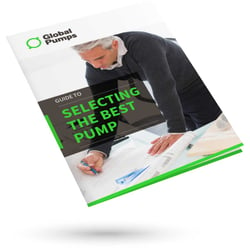When it comes to food grade pumps, you should know all the benefits. Do you know the warning signs of any onset pump problems and how to detect them? In our latest blog, we discuss 5 warning signs to look for and how to avoid them to ensure your pump maintains peak performance.

What to look for…
1. Pump cavitation
Pump cavitation is a common problem, especially for centrifugal pumps. When liquid pressure falls below vapour pressure, bubbles form at the impeller inlet, which then implode on the discharge side of the pump, damaging pump internals, disrupting flow and leading to seal failure. there are three common causes of cavitation namely restrictions in your pumps suction line (too small or too long a suction, blocked inlet filter, etc), too high a suction lift, or thirdly, by excess flow through the pump from downhill pumping i.e pumping from the bottom of a large full vat into an empty one.
If your pump suddenly develops a noisy rattling sound, try and identify if any of the causes of cavitation are present, as it is important to avoid cavitation to maintain efficiency and increase the lifespan of your pump. If you hear strange noises coming from your pump and cannot identify the cause, contact one of our pump experts immediately.
If you hear strange noises coming from your pump and cannot identify the cause, contact one of our pump experts immediately.
2. Corrosion
Corrosion occurs because of a chemical reaction between the pump materials and the fluid being pumped.
When corrosion occurs, the pump's efficiency and performance can be drastically affected, and in extreme cases can lead to pump failure.
To avoid corrosion, ensure you are selecting a pump that’s manufactured from compatible materials. Also, for food grade applications your pump must be hygienic and easily cleaned.
3. Temperature/pressure
Another warning sign to look for is the pump casings temperature. Blocked discharge can result in recirculation, eventually boiling the liquid inside the pump. This can damage the mechanical seal resulting in pump failure. It is important to monitor your pump closely and look for any significant pump temperature changes. Ensure you are pumping the correct products through the product lines, for example: if you are pumping wine through a filter prior to bottling, a lobe pump is suitable, whereas a centrifugal pump is more suited high-volume wine transfer and tanker unloading, particularly where there are solids.
4. Premature failure
Poor installation of your pump can lead to shaft misalignment and excessive vibration, resulting in pump failure. Vibration can damage seals and internals which will result in leakage.
It is important to regularly maintain your pump, be certain it is correctly installed in the first place, and ensure it is the right pump for your application.
5. General wear/lost performance
As with all equipment, wear is inevitable when running a pump, and this will result in reduced performance. Wear can be caused by an improperly sized pump, cavitation, fluid properties (abrasives), pipe strain and long-term use.
To slow down the wear rate of your pump, Global Pumps suggest ensuring that the pump size and materials are suitable for the application, and regular inspection and maintenance is carried out.
These factors are crucial to maintaining your pumps integrity and promote peak performance. Be sure to keep an eye out for warning signs and get in touch with us today if you need any further information.

